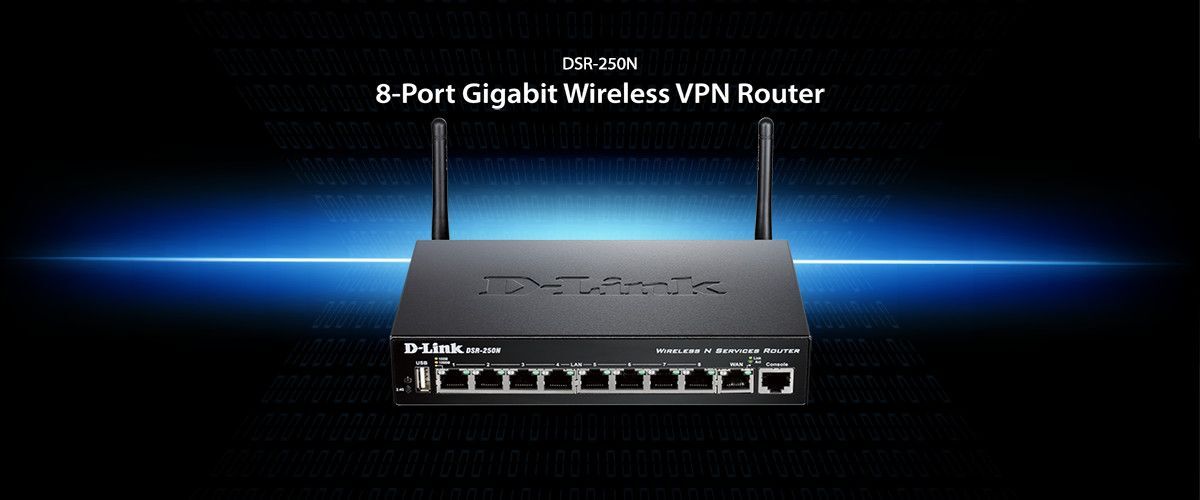I moved to an OPNsense router a couple of years ago and I’ve never looked back. Hell is shitty consumer routers.
This is the way.
Do you have any recommendations on OPNSense routers?
Oh man, it’s a nightmare and I just happened to be lucky. I ended up buying one of those passively cooled router-esque N100 boxes out of China (AliExpress) and while it was a total punt it turned out to be a great experience, and their customer service was actually good too.
Kingdel was the make/vendor and it’s been rock solid.
I see. Currently I’m using an Asus one with Asus-WRT but I’m thinking of moving to an OPNSense one.
Instead of trusting DLink with an off the shelf NAS, it might be easier to build your own with a Raspberry Pi running openmediavault hooked up to a couple of USB hard drives. It’s worked well for me for over 6 years now with no issue and could cost way less.
I built my own with an old PC, and it’s pretty easy. You can install TruNAS or OMV if you want, but I ended up just installing my distro of choice (OpenSUSE Leap in this case), set up BTRFS on my NAS drives in something similar to RAID 1, and set up a few services (Samba, Jellyfin, etc). TruNAS or OMV will make that initial setup a lot easier, so do that if you’re not confident.
The Raspberry Pi is not nearly fast enough for what I want it for, and I had an old PC laying around, so I figured I might as well reuse what I have. I started w/ a Phenom II x4 from 15 years ago, and recently upgraded to my Ryzen 1700. I plan to upgrade my NAS hardware whenever I upgrade my gaming PC to keep things recent-ish. Total power draw is somewhere around 50W, so a fair bit more than a Raspberry Pi, but only like 2x more due to the drive overhead (I use NAS-grade HDDs).
“Easier“, no. Not for the average person on the street.
Don’t get me wrong, I’ve built several NAS over the years (dropped OMV for just Arch and the packages I want) and loaded OpenWRT (etc) on routers
But, building my own NAS, servicing my own car, repairing my own house, felling my own trees, at some point I’ll just lack knowledge and buy something simple / pay someone to do it… and that’s where cheap consumer electronics fits (unfortunately)
Except a lot of it doesn’t fit because tons of it is predatory trash sold as functional when one or two things can go wrong and ruin everything.
It’s hard to expect the layman to need something technical, not know enough technically to do it themselves, but have enough surface knowledge to not get ripped off. It’s like threading a needle of the perfect level of wisdom.
Like I’d wager the common every dude would look for a connected hard drive, maybe Western Digital because of the market saturation, but there’s just so much garbage online that half works.
Then there’s interconnectivity issues, software not being available cross-platform after already spending hundreds on hardware, Apple problems.
The average user is just set and ready to be ripped off at like, all angles.
Yup, and that’s why I largely recommend DIY. If you commit to DIY, you will do the necessary research to not get too ripped off, and you can usually start w/ stuff you have laying around anyway. In my case, I upgraded my old Phenom II from 15 years ago to a Ryzen 1700, so I used the old Phenom PC as my NAS and just needed to buy some drives (got WD Reds). I have since upgraded my 1700, so now that’s what’s in my NAS.
If you’re unwilling to put in the work to DIY, I recommend cloud services instead. This solves two problems:
- unsophisticated NAS owner likely won’t do regular offsite backups
- no hardware to get screwed on
So either commit to DIY, or use off-the-shelf cloud products. I cannot recommend anything in between.
The DSR-150 is still being sold on Amazon under the D-Link store. Why the hell would you end of life something you still sell.
Just say you are from the Middle East.
Product Status (Revision Series_v1500): Live - The product is actively being manufactured and sold."
Technically most if not all Amazon sellers are third party who sell to the warehouse and then it sits there until its listing contract expires.
Thats why Rode Microphone refuses to sell on Amazon.
Then recall all the end of life stock.
They have a page on there though
Maybe they’ve changed stances since they acquired Mackie in the merger last year. They used to have a statement on their website about finding authorized distributors like PSSL.
Don’t want to get lumbered with a bunch of old stock now, do you?
I think it’s easy to blame a company for how they are handling this, but at the same time, if you’re using a router that old you should probably already assume that it has vulnerabilities that haven’t and probably won’t be patched.
A bunch of juvenile D-Linkuents. Get it? D-Link? Nevermind…
Can highly recommend ASUS, most of their models can be flashed with custom firmware that is supported beyond EOL. And their EOL cycle is also pretty long.
Or just get a GLi.Net router, and get the OpenWRT firmware right out of the box without even needing to flash it manually.
As a bonus, if you ever have the need for one, they also have some badass travel routers that can use your phone as a modem, take a SIM card natively, or just connect to an Ethernet/public WiFi to create your own secure network. Super handy if you do a lot of traveling, because they can be used in hotels or cruise ships. Know how cruise ships sell internet access per device? Yeah, your travel router only counts as one device. Set that bad boy up, and now all of your devices have internet.
its not openwrt. its openwrt based, with proprietary modifications, from a country where saying no to planting a backdoor is not an option.
everyone is better off just flashing the open source firmware themselves. both with gl.inet and other brands, but I would say the same for openwrt’s own router-like device too due to supply chain attacks
It’s way cheaper to just set up your own device with openwrt, not that difficult, and with the added benefit of having open source code. Why half-ass it.
Seconded. I didn’t know the life cycle of a router but I replaced my asus router with another asus router recently. Not because it stopped working but because we have so many devices for our iot and I wanted some vlan. The old one is being repurposed at someone else’s house
Perfect time for users to buy something that isn’t D-Link then innit.
The article also mentions Cisco briefly, who also suck. Almost as much as Palo Alto
It baffles my mind how people have picked up a cheap knockoff manufacturer and forcibly made it into a major brand… That still produces junk at same 5 dollar knockoff quality level it had from the start.
I’m confused which brands you speak of, Asus used to be very good
then what? the brand thats owned by a chinese company, and even designs not just the software but the hardware too according to Chinese interests, tp-link?
or the one that requires online registration to access the setup page (and so to replace the firmware) that is netgear?what?
the question was what else to buy, because the alternatives I know are not exactly better…
ah. I personally use ubiquiti switches and aps. Cisco would be an alternative but licensing can be a bitch for home use.
Long ago, D-Link was good but then they sold the company. Just like Alienware, Farbreware, Oaklies, etc.
Oakley, like the sunglasses company? What happened to them?
Luxottica. I’ve visited their HQ in soCal, people aren’t having fun and coming up with wacky designs anymore.
RubberElectrons beat me to it, but EyeMed Vision Care, LensCrafters, Pearle Vision, Sears Optical, Sunglass Hut, and Target Optical are all the same company, Luxottica.
Glasses from Armani, Brooks Brothers, Burberry, Chanel, Coach, DKNY, Dolce & Gabbana, Michael Kors, Oakley, Oliver Peoples, Persol, Polo Ralph Lauren, Ray-Ban, Tiffany, Valentino, Vogue, and Versace, are all from the same company, Luxottica.
There’s really got to be a law that prevents a company from have “competing” brands.
Commodity hardware & open source software for the win.
When my Western Digital NAS was never going to get critical security patches, I was so freaking glad to find out that they just used software raid… I threw the HDDs in a Debian server and never looked back.
It’s certainly nice to have things that are turn-key, but if you can find your way around any OS, just avoid proprietary everything.
Welp never buying anything D-Link ever again
I had a couple of dlink gigabit desktop switches. Two failed so far, one has taken down the whole network, not just devices directly connected to it, and the other one fried 2 router ports when it died. I learned my lessons about buying crappy network hardware.
Edit: that happened within a few months, so these switches also have a very clear EOL.
Because they won’t support routers that were EOL a decade ago?
Most reached EOL in may of this year.
EOL is still EOL
Then they can open source the code so someone else can fix the issue.
May 1st 2024 was a decade ago? (The article has a list and only two are old as you mention, though not quite a decade yet)
Companies should be forced to release all source code for products that are “EOL”. I will never change my mind on this.
Especially for stuff like medical implants
‘Sorry, your eyes are no longer supported’
And anything that touches on security (i.e. connected to the internet), and routers definitely count here.
Because that bug was so egregious, it demonstrates a rare level of incompetence.
that bug was so egregious, it demonstrates a rare level of incompetence
I wish so much this was true, but it super isn’t. Some of the recent Cisco security flaws are just so brain-dead stupid you wonder if they have any internal quality control at all… and, well, there was the Crowdstrike thing…
Idk, this was kind of a rare combination of “write secure function; proceed to ignore secure function and rawdog strings instead” + “it can be exploited by entering a string with a semicolon”. Neither of those are anything near as egregious as a use after free or buffer overflow. I get programming is hard but like, yikes. It should have been caught on both ends
Some of the recent Cisco security flaws are just so brain-dead stupid you wonder if they have any internal quality control at all
At the super budget prices Cisco charges, do you really expect quality control to be included? You’ve got to buy a quality control subscription for that. /s
I agree. Buy a new router that isn’t Dlink.
Yeah after gettin screwed by the DLink you might as well use the TP-Link
I hate to say it, but depending on manufacturers for this kind of stuff will always inevitably lead to these kinds of situations. This is why I always buy OpenWrt compatible routers and DIY my own NAS.
Over the years, I’ve experienced:
- Netgear refusing to patch bugs like their IPv6 firewall essentially letting all traffic through on the R7800
- QNAP shipping NASes with Intel CPUs that had clock drift issues so bad they essentially bricked themselves. They then refused to provide any kind of support for them.
After that I basically said, fuck it, I’ll DIY my own and have been much happier ever since. If you have the know-how and the time, DIY is the way to go for longevity.
a new non dlink router. Since the should be named f-link for a number of reasons.
Our shit sucks. Buy more lol
Why do they say they’re prohibited to provide support? That a bad translation?
















